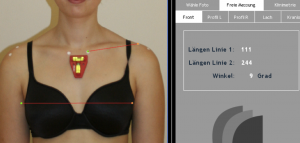Do you still measure or do you interpret already?
The physical examination is important in the assessment of the patient presenting with musculoskeletal problems. Measurement instruments help us to evaluate the presentation of our patient more objectively. It doesn’t matter which measurement tool we use we should be aware about it’s quality criteria to get a better interpretation of our therapeutic outcomes. It is important that the physiotherapist be aware of the measurement tools available and which to use for the patient presenting with musculoskeletal problems. In this way the therapist can interpret assessment findings and plan management to optimize patient outcomes.
What should we know?
Is the measurement valid?
We should know if the measurement or outcome measure we use is valid, that means, does the measurement measure the construct it is said to or claims to measure.
Is the measurement reliable?
We should also know if the measurement is reliable, that means the degree to which an assessment tool measures the result repeatedly and consistently. In fact three types of reliability are interesting for us:
1. Intra-tester reliability: Do the same tester gets every time the same test value, or how much does the value change?
2. Inter-tester reliability: If two testers measure the same construct do they get the same result, or how much does the result differ?
3. Measurement error: How big is the difference between two measurement values?
(de Vet, 2012)
An other interesting criteria is responsiveness. Responsiveness tells us if the test is able to measure change in an/the underlying concept over a defined time.
All these parameters are important to interpret the change in the physical examination of our patients from one treatment session to the next.
For example a physiotherapist (the same tester) chooses to use photometry to assess the patient‘s shoulder girdle posture recording the acromioclavicular angle measurement. If in the second session the photometry measures and records a change in this value, it is important to know if the change, (difference from the first session to the second session) is bigger than the measurement error within the measurement taken by the one therapist (or between two testers, if there was another colleague involved) because only if the value is bigger it could be assumed there is a real change.
Typically in a physiotherapeutic setting the intervention is performed over a certain time, therefore it is necessary to know if the measurement the physiotherapist has chosen to use, is able to measure validly a change over this time given a change is expected.
Values for the photometry measurement of the acromioclavicular angle are:
Validität: r = 0,85 (good correlation with a digital inclinometer)
Reliability (Intra-tester): ICC = 0,95 (excellent)
Measurment error: 1.04°
Responsivness: AUC: 0,72
(it seams that with this angle it is able to measure change if the underlying construct is changing; AUC: 0,5 means no distinguish between change or no change)
(Schöttker-Königer, Schäfer, Kapitza, 2013)
What is important to know for the clinical work with measurement tools based on this example with the acromioclavicular angle?
This tool is able to measure what it purports to measure because the correlation with a digital inclinometer showed a good correlation (they measured the same). The measurement is very consistent with repeated measures (is measures two times nearly the same). A change bigger than 1,04° could be a real change in posture of the shoulder girdle and it is able to measure change over time.
Is this change important?
But the next question is how big should the change be, to be clinically important?
To answer this question the minimal clinically important difference (MCID) could be interesting. It is the smallest change in a treatment outcome that a patient would identify as important.
Sometimes we read studies with statistical significant results but the outcome value is not higher than the measurement error of the used measurement tool and/or may not necessarily imply clinical importance. Therefore we need to be aware about some statistical methods which do not represent or translate into our daily clinical work.
The next point is that not for every measurement tool all relevant quality criteria are available. A good example for complete quality criteria is a study done by Kamper et al about the global rating of change (GRC) scales (Kamper et al, 2009). The GRC is a scale with that clinicians could ask their patients to rate if their health condition has improved or deteriorated over time, for example after therapy.
Here are the interesting clinimetric properties regarding this assessment scale and the measure:
Test-retest: ICC 0,90 on 11 point GRC
Face validity: Pearson’s r = 0,72 - 0,90 with patient-rated importance of change
Responsiveness: Standardized response mean 0,2-1,7
MCID: 2 points on 11 point GRC
MDC (minimal detectable change): 0,45 on 11 point GRC
(Kamper et al, 2009)
This table shows us that the minimal detectable change which the GRC can measure is 0,45 points, but a clinical importance is achieved by a value of 2 points.
Finally this article is a small overview of statistical and clinical relevant quality criteria of measurement tools which can help us to interpret the change in our therapeutic outcomes.
So, don’t measure, interpret.
Literature:
De Vet H.C.W., Terwee C.B., Mokkink L.B., Knol D.L.(2010). Measurement in Medicine, Practical Guides to biostatistics and epidemiology. Cambrigde Verlage.
Kamper S., Maher C., MacKay G. (2009). Global Rating of Change scales: A Review of strengths and weaknesses and Considerations for Design. The Journal of Manual & Manipulativ Therapy, Vol: 17, Nr. 3, S. 163-170.
Schöttker-Königer T., Schäfer A., Kapitza C. (2013). Gütekriterien der Fotometrie als Messinstrument zur Evaluierung der Position des Schultergürtels bei Probanden/innen mit und ohne verminderter Funktionsfähigkeit der Schulter und Haltungsauffälligkeiten des Schultergürtels (Master Thesis, HAWK Hildesheim).





Comments